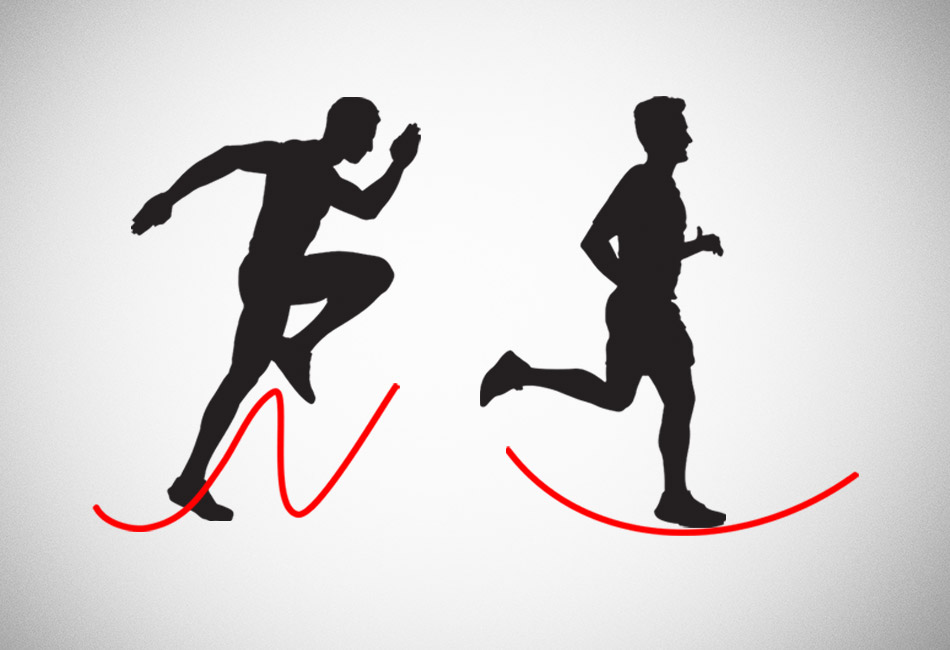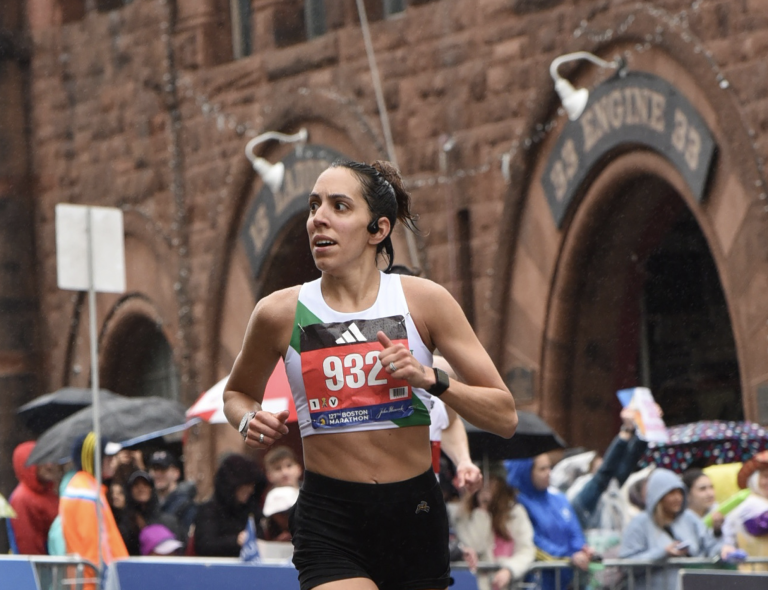How Can I Run Faster And Longer?
To run faster and longer, focus on improving your endurance and speed through consistent training and proper nutrition. Running is a great way to stay fit and healthy, but it can be challenging if you’re trying to increase your speed and distance.
If you’re looking to improve your running abilities, there are a few key strategies you can use to get the most out of your workouts. One of the most important things you can do is to focus on building your endurance and stamina through regular exercise.
This means incorporating long runs, interval training, and tempo runs into your routine, and gradually increasing the distance and intensity over time. Additionally, make sure you’re fueling your body with the right nutrients and staying hydrated, as this can have a big impact on your performance. With dedication and hard work, you can become a faster and stronger runner.
Set Realistic Goals
Running is a great way to stay fit, but if you want to get better, you need to work on your endurance and speed. Setting realistic goals is critical to improving your running performance. By starting with small steps, you can work your way up to more challenging goals and avoid injury and burnout.
Assess Current Fitness Level
The first step to improving your running performance is to assess your current fitness level. Start by evaluating your endurance and speed. You can do this by running for a set distance or time and tracking your pace. Knowing your starting point will help you set realistic goals that are achievable and challenging.
Identify Specific Running Goals
Once you have assessed your current fitness level, it’s time to identify specific running goals. These goals should be specific, measurable, and time-based. For example, you might set a goal to run a 5K in under 30 minutes within the next three months. This goal gives you a clear target to aim for and a timeline to work within.
Plan For Progression
Now that you have identified your specific running goals, it’s time to plan for progression. This means breaking your goals down into smaller, achievable steps. For example, if your goal is to run a 5K in under 30 minutes, you might start by running for 10 minutes at a time and gradually increasing your time and distance each week. By gradually increasing the intensity and duration of your runs, you can build endurance and speed over time.
| Plan for Progression Example: | |
|---|---|
| Week 1: | Run for 10 minutes at a moderate pace, three times per week. |
| Week 2: | Run for 15 minutes at a moderate pace, three times per week. |
| Week 3: | Run for 20 minutes at a moderate pace, three times per week. |
| Week 4: | Run for 25 minutes at a moderate pace, three times per week. |
| Week 5: | Run for 30 minutes at a moderate pace, three times per week. |
By following these three steps, you can set realistic running goals, work towards achieving them, and avoid injury and burnout. With time and dedication, you can improve your endurance and speed, and become a faster and stronger runner.

Credit: m.youtube.com
Develop A Training Plan
Developing a training plan is crucial if you want to improve your running speed and endurance. Start by setting realistic goals and gradually increasing your mileage and intensity. Include a mix of running and cross-training to prevent injury and improve overall fitness.
Developing a training plan is critical if you want to improve your running endurance and speed. Without a plan, it’s easy to fall into bad habits and plateau without making significant progress. Whether you’re a beginner or an experienced runner, it’s important to design a training schedule that suits your level and schedules.Build Endurance
Building endurance is the foundation for improving your running performance. One way to build endurance is to regularly increase your mileage over time to increase your fitness level. This can be achieved by incorporating long runs into your training plan. Another way to boost endurance is to run at a steady, comfortable pace for an extended period, incorporating intervals of intense running over flat, hilly, or mixed terrain. Gradually increasing distances and speeds can help improve your stamina level and prevent injury. Keeping consistent with your running schedule helps maintain your endurance level and sets you on the path to running faster.Incorporate Interval Training
Interval training is a popular way to improve speed and endurance by alternating high-intensity running with periods of rest or lower-intensity running. It helps build strength and speed and improves cardiovascular fitness. To incorporate interval training into your routine, start with short bursts of high-intensity running and alternate with longer periods of low-intensity running or rest. As you get fitter, gradually increase the intensity or duration of the high-intensity phase.Include Strength Training
Strength training exercises can help improve running speed by strengthening key muscle groups involved in running, such as the glutes, legs, and core. Incorporating bodyweight exercises such as squats, lunges, and leg raises can help strengthen these muscle groups. Resistance training and plyometric exercises can also help improve power, endurance, and speed. In conclusion, whether you’re a beginner or an experienced runner, developing a training plan that incorporates endurance running, interval training, and strength training can help you run faster and longer. By slowly and gradually building up your endurance, incorporating interval training, and strengthening your body, you can progress steadily towards becoming a better and faster runner. So next time you step out for a run, keep these tips in mind, and you will be on your way to running faster and longer in no time!Use Proper Running Form
Improving your running form is key to running faster and longer. By maintaining proper posture, foot strike, and arm swing, you can reduce muscle fatigue and prevent injury, resulting in a more efficient and effective run.
One of the key aspects of running faster and longer is adopting the right form and technique. By making small adjustments to your posture, foot strike, arms and breathing, you can improve your overall running form and reduce your risk of injuries. Here are some tips on how to use proper running form:Posture And Alignment
Maintaining good posture and alignment is crucial for efficient running. By standing tall with your head up, shoulders back, and pelvis slightly tilted forward, you will create an optimal alignment that allows you to breathe easier and move more efficiently. Keep your core engaged and avoid slouching or leaning too far forward as this can cause unnecessary strain on your hips, spine, and lower back.Foot Strike
The way your foot strikes the ground can have a significant impact on your speed and endurance. Aim to land on the middle of your foot, rather than the heel or toes, as this helps to distribute the impact evenly and reduce the risk of injury. Keep your stride short and quick, and try to maintain a consistent rhythm as you run.Arms And Breathing
Your arms and breathing can also affect your running form and speed. Keep your arms at a 90-degree angle, relaxed and close to your body. Avoid crossing your arms or swinging them across your body, as this can cause unnecessary strain and affect your balance. As for your breathing, aim to breathe deeply and rhythmically, in sync with your running cadence. Focus on exhaling fully and inhaling fully to maximize oxygen intake and reduce fatigue. By incorporating these tips and techniques into your running routine, you can improve your form and boost your speed and endurance. Remember to start slow and gradually build up your pace and distance over time, while staying mindful of your form and technique. Happy running!
Credit: www.facebook.com
Implement Recovery Strategies
Running is a fantastic exercise that strengthens various parts of the body, including the cardiovascular system. However, it can be challenging to run faster and longer, especially for beginners. Fortunately, there are recovery strategies that individuals can implement to improve their endurance and speed. These strategies can help individuals improve their overall performance and reduce the risk of injuries.
Stay Hydrated
Dehydration can significantly affect an individual’s performance when running. Therefore, staying hydrated is crucial. Individuals should aim to drink enough water before, during, and after running. A good way to ensure that an individual is adequately hydrated is to check the color of their urine; clear or light-colored urine indicates good hydration levels.
Get Plenty Of Rest
Rest is essential for athletes, especially those engaged in high-intensity activities like running. Getting enough sleep promotes recovery, reduces the risk of injury, and improves overall performance. Individuals should aim to sleep 7-9 hours per night and give their bodies enough time to recover after running.
Incorporate Active Recovery
Active recovery involves doing low-intensity exercises to promote blood flow, reduce muscle stiffness, and prevent injury. It is an effective way to recover after a long run. Active recovery exercises may include walking, light jogging, or stretching. It is important to keep moving the body at a low intensity after a long run to facilitate better recovery and improvement in performance.
In conclusion, implementing recovery strategies like staying hydrated, getting plenty of rest, and incorporating active recovery can help individuals run faster and longer. These strategies are vital for reducing the risk of injuries, promoting recovery, and improving overall performance.
Track And Measure Progress
For many runners, the desire to improve performance is a constant goal. While there are many techniques and tips for getting faster and running longer, one of the most effective ways is tracking and measuring progress. Here are some ways that you can use to track and measure your running progress:
Use Wearable Technology
Wearable technology such as smartwatches, fitness trackers, and GPS running watches, are great tools to help track your running progress. These devices monitor various metrics such as time, pace, distance, heart rate, and even sleep. Additionally, most of these devices allow you to set goals and track progress towards those goals. By using wearable technology, you can easily monitor your progress, identify areas for improvement, and adjust your training plan accordingly.
Record Milestones
Recording your milestones is a great way to track progress towards your running goals. Milestones can include personal best times, longest distances run, or even overcoming injuries. You can jot down these milestones in a training diary or log them in a running app on your phone. Seeing your progress over time can be very motivating and also helps to identify areas where you need to focus your efforts.
Evaluate Performance
Evaluating your running performance is essential for tracking progress. This process involves analyzing your data from wearable technology and milestones to identify areas where you need to improve. For example, if you notice that your pace is slowing down, you can adjust your training plan to include more interval training or hill runs. Evaluating your performance regularly allows you to be proactive in fixing weaknesses and improving your overall performance.
By using these methods to track and measure progress, you can make significant improvements in your running performance. Remember that tracking your progress is not only great for motivation, but it also helps you to stay on track towards achieving your running goals.

Credit: www.pinterest.com
Frequently Asked Questions Of How Can I Run Faster And Longer?
How Do I Train Myself To Run Faster And Longer?
To train yourself to run faster and longer, gradually increase your mileage each week while also incorporating strength training exercises and interval training. Fuel your body with nutrient-rich foods, stay hydrated, and prioritize rest and recovery. Consistency and patience are key – don’t push yourself too hard too quickly.
How Do I Run Longer Without Getting Tired?
Improving endurance and reducing fatigue while running can be achieved through the following tips: 1. Gradually increase distance and pace 2. Maintain good form and efficient breathing 3. Fuel your body with proper nutrition 4. Incorporate strength and cross-training exercises 5.
Stay mentally focused and motivated.
How Can I Run For A Long Time Fast?
To run for a long time fast, you must maintain proper form and technique, gradually increase the distance and duration of your runs, incorporate interval training, prioritize proper nutrition and hydration, and allow for adequate rest and recovery time. Consistency is key to improving endurance and speed in running.
Conclusion
Running faster and longer requires consistent effort, discipline, and patience. Implementing proper running techniques, incorporating strength training, following a balanced diet, and allowing adequate rest and recovery time are some of the key factors that can help you achieve your running goals.
Remember to start at your own pace and gradually progress to avoid injury. With perseverance and determination, you can become a better and stronger runner. Keep pushing yourself and enjoy the journey towards a healthier you!







